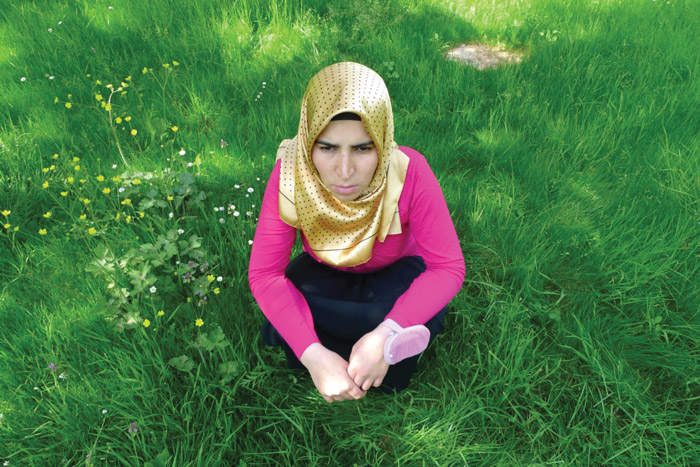In Montreal’s landlocked position, one may miss the reassuring embrace of the ocean, which, for many coastal natives, has come to represent an integral element of home. At Musée d’art Contemporain de Montreal (MACM), Sophie Calle’s debut exhibit, entitled For the First and Last Time, has captured the mental images of blind people and the ocean, exploring the loss, beauty, and human desire to feel connected to our environment.
The First and Last Time comprises of two recent works by Calle that focus on subjects from Istanbul. The first, titled The Last Image (2010), combines photographs and written text telling the story of how the subjects lost their sight, their last sight, and the image that will always remain with them. The second project, Voir la Mer (2011), consists of videos of people experiencing the ocean for the first time—some of whom have spent their whole lives in Istanbul, a place surrounded by the sea. Calle seamlessly transitions between these different works by ending the beginning exhibit with asking a man who was born blind what his perception of beauty is. He states, “the sea, the sea going out so far you lose sight of it.”
The most moving element of The Last Image is the stories that accompany the photographs. Annoyingly though, only the French text is displayed alongside the photographs and all English readers must read off a printed sheet provided, something that ultimately took away from the overall experience. Calle retells all the experiences in a neutral tone despite the wide variety of circumstances that led to the subjects’ vision loss.
One particularly harsh story details a man who was shot and blinded, left only with the image of his shooter, whom he will never be able to identify. Yet within another such tragedy emerged a story of beauty for a woman who will always remember her husband as he was at 39-years-old. Each of these stories carried specific details yet remained universal, allowing one to intimately connect to their perspectives.
The photographic portraits are put in a position of great prominence as the subjects often have direct eye contact with the camera, making the image something you cannot forget. Our preconceptions of the blind are challenged by the positioning of their line of sight, making the viewer feel as though they are being watched. Many of the images are out of focus, as Calle captures the mental last image such as a “bus, like a red cloud.” The exhibit is transformative as we parallel our view with their final picture, attempting to see life through the yes of the blind.
The second portion of the exhibit begins by showing the subjects facing the ocean. The camera then turns to face them, pointedly focusing on their various emotions of confusion, sadness, and joy. Again, the eyes are central to the impression of the exhibit, containing a subliminal quality and connecting the viewer to the subject.
Calle explores themes of isolation and communication along with both the loss and power of the senses through methods of individual detail, all while reaching a sense of universality in this study of what it means to be human.
For the First and Last Time runs until May 10, 2015 at the Musée d’art Contemporain de Montreal (185 Sainte-Catherine Ouest). Student admission is $10.







